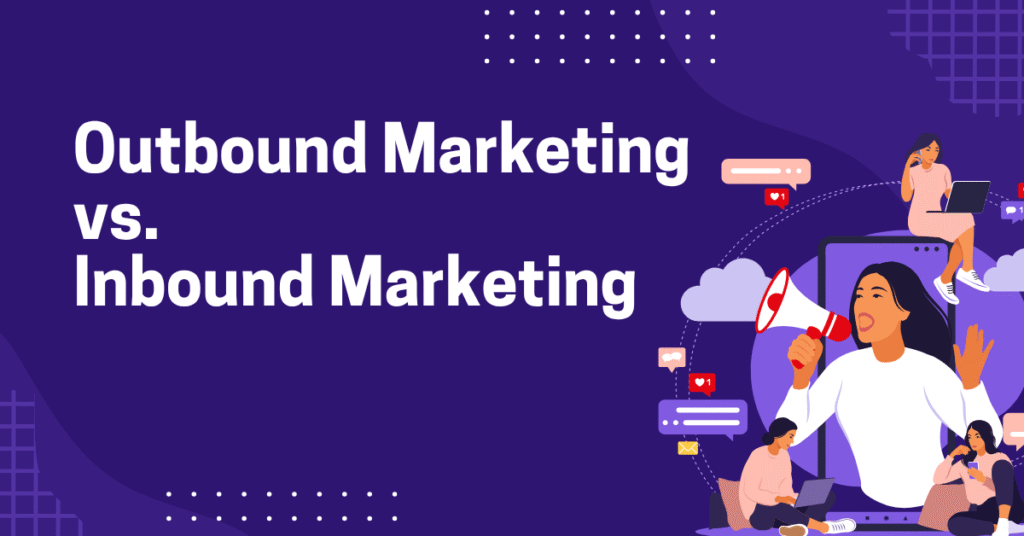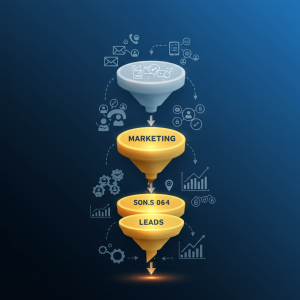Outbound Marketing vs. Inbound Marketing for Your Business Strategy

Marketing is the lifeblood of any successful business. But choosing the right strategy can be overwhelming, especially with terms like “outbound marketing” and “inbound marketing” being thrown around in every webinar, blog post, and team meeting. So, how do they differ, and which one is right for you?
This comprehensive guide breaks it all down. You’ll learn what outbound and inbound marketing entail, the benefits of each, and how to find the right mix to accelerate growth for your business.
Understanding Outbound Marketing
Outbound marketing, also known as “traditional marketing,” entails directly reaching out to potential customers to deliver your message. Think of it as pushing your brand or product onto people, regardless of whether they are actively looking for it.
Common Outbound Marketing Strategies
- TV and Radio Ads: Classic yet effective in reaching broad demographics.
- Cold Emails and Sales Calls: Sending a message directly to leads who may or may not know anything about your brand.
- Billboards and Print Ads: Grabbing attention through visual displays in public areas or magazines.
- Display Ads and Pay-Per-Click (PPC): Online banners and paid search that directly target users across the web.
Benefits of Outbound Marketing
- Broad Reach: Outbound marketing allows you to reach a wide audience across multiple channels, perfect for brand awareness campaigns.
- Immediate Impact: Campaigns like PPC ads or TV spots generate fast results, especially if you have a compelling offer.
- Predictability: With well-established metrics, such as Cost Per Lead (CPL), you can estimate how much reach or engagement your campaign will provide.
However, outbound marketing often comes with higher costs, a lower ROI compared to inbound methods, and the potential to irritate audiences through interruptive practices.
Understanding Inbound Marketing
Inbound marketing flips the script by focusing on attracting customers to your brand through valuable, relevant content. Instead of interrupting potential leads, it pulls them in naturally when they are actively searching for solutions.
Common Inbound Marketing Strategies
- Content Marketing: Blogs, how-to guides, videos, and infographics that educate and engage audiences.
- SEO (Search Engine Optimization): Ensuring your website ranks higher on search engines for targeted keywords.
- Social Media Marketing: Organically building a community through platforms like Instagram, Facebook, and LinkedIn.
- Email Marketing: Nurturing prospects through tailored email sequences.
- Webinars and Podcasts: Offering in-depth, value-packed content to establish credibility.
Benefits of Inbound Marketing
- Cost-Effectiveness: Content creation and SEO strategies often cost less over time and deliver compounding long-term results.
- Higher Engagement: Because inbound strategies are audience-centric, they build trust, making it easier to convert leads into customers.
- Customer Loyalty: Providing valuable, ongoing content encourages lasting relationships and repeat purchases.
While inbound marketing takes time to produce results, it excels at nurturing leads over the long haul and creating an ecosystem that naturally attracts and retains customers.
Outbound vs. Inbound Marketing
Now that we’ve defined both, how do outbound and inbound marketing compare? Here’s a side-by-side breakdown:
|
Aspect |
Outbound Marketing |
Inbound Marketing |
|---|---|---|
|
Approach |
Push (message to audience) |
Pull (attract audience to message) |
|
Cost |
Often High |
Lower, scalable over time |
|
Engagement |
May feel intrusive |
Personalized and value-driven |
|
Target Audience |
Broad, less targeted |
Niche, highly targeted |
|
Time to Results |
Fast |
Long-term investment |
|
Content |
Ads and promotions |
Educational, helpful, or entertaining |
Finding the Right Balance for Your Business
The question isn’t really about outbound vs. inbound marketing; it’s about how to effectively combine the two. Depending on your business goals and resources, the optimal strategy might require leveraging both approaches.
When to Prioritize Outbound Marketing
- Launching a New Product or Business: When building immediate brand awareness in a short amount of time is critical, outbound marketing delivers.
- Targeting a Wide Audience: If your product appeals to diverse demographics or audiences that aren’t yet aware of your solution, outbound techniques can help spread the word.
- Short-Term Goals: If your business requires quick lead generation or immediate revenue, focus on outbound channels like PPC ads and direct mail.
When to Prioritize Inbound Marketing
- Niche Markets: If you’re targeting a specific audience with precise needs, inbound marketing is excellent for building credibility and trust.
- Long-Term Growth: Content and SEO strategies compound over time, making them ideal for building a foundation of traffic and leads.
- Building Customer Relationships: If fostering loyalty and community is central to your brand, inbound approaches excel at creating strong connections.
Examples of Combining Outbound and Inbound
- Lead Nurturing Funnel: Use PPC ads (outbound) to drive traffic to a landing page with an engaging blog post or eBook (inbound). Then, nurture leads through email sequences.
- Geo-Targeted Campaigns: Run billboards or radio ads (outbound) in one geographic area, while using local SEO and social media to deepen engagement (inbound).
- Webinars and Promotions: Run a webinar (inbound) to provide value, and simultaneously follow up with targeted cold emails or phone calls (outbound) to convert leads.
Outbound and Inbound in Action
HubSpot
HubSpot excels in inbound marketing, creating free tools, blogs, and webinars to attract leads. Yet, their outbound efforts (ads and promotions) amplify their reach, especially for product launches and new audience segments.
Airbnb
Known for its community-driven inbound strategy, Airbnb also employs aggressive outbound marketing, such as PPC ads and email retargeting during peak travel seasons, to stay ahead of competitors.
Nike
Nike creates engaging inbound content (like motivational videos and tips for athletes), but pairs it with bold outbound campaigns across billboards, TV commercials, and paid partnerships to generate buzz.
By blending these strategies, brands maximize both their short-term gains and long-term customer relationships.
Make Marketing Work for You
Outbound marketing drives awareness, while inbound marketing builds trust and engagement. The secret lies in leveraging the strengths of both, with a strategy tailored to your business. Evaluate your goals, budget, and audience to strike the perfect balance.
Whether you’re ready to strengthen your blog’s SEO or trying to increase direct sales with targeted ads, choosing an effective marketing strategy is the first step in reaching new heights. Need help optimizing your marketing approach? Schedule a free consultation with our experts today and start seeing results tomorrow.





